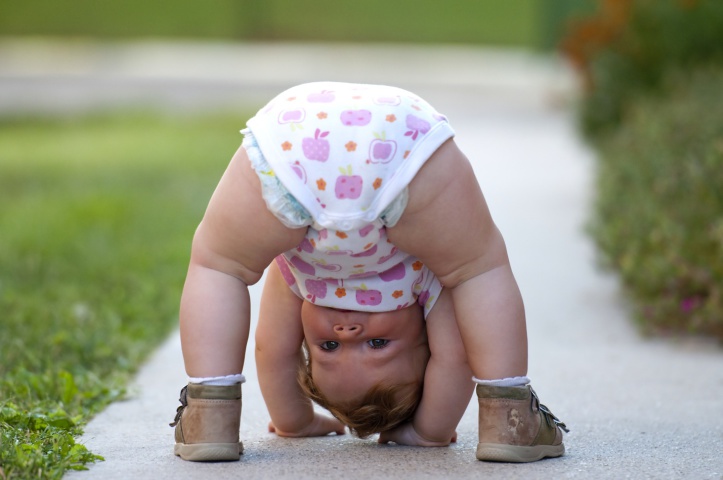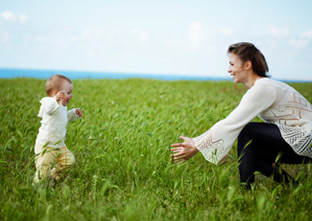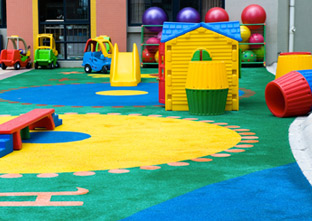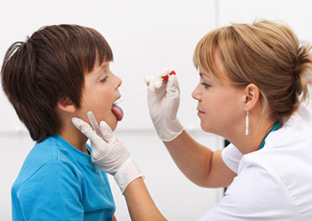
Baby grows up, plastics adapt
Finding the shoe that fits
Here is another hotly-debated topic: what shoes should we put on baby's feet once he starts walking? It was long thought that the ideal shoe was a high-topped and rigid shoe providing support to the ankles until the day that it was realised that it may not be particularly easy to take one's first steps in such an accessory. Have you ever tried to walk in ski boots? Then came the fashion of walking barefoot, thought to provide a better feeling for movement and to encourage development of foot muscles. As usual, the ideal solution was to be found somewhere between the two alternatives and the solution was provided by the wide variety of polymers that enabled the production of soles thick enough to protect little feet while remaining soft and flexible enough not to impede learning to walk. Another advantage of synthetic soles is that they are light, and some are augmented with antiperspirant systems for increased comfort.

Keeping baby safe

Yes, he's walking and he'll soon be able to explore every corner of the house. Parents have to remain vigilant at this point. Cupboards, cabinets, stairs and toilets are all tempting playgrounds for our budding explorers; for parents, they are all risk areas. Fortunately, and because baby's safety always comes first, a number of devices are available to help: door and window locks, table corner protections, toilet seat fastening mechanisms, closet locks, door finger guards, etc. They all have one thing in common: they are all made from plastic and are therefore very inexpensive, simple to set up and often very ingenious.
Long-used in nurseries

These objects have proven their effectiveness in a large number of nurseries, and they are not the only ones that childhood specialists recommend. This is the case of soft floor coverings that can now be found both inside and outside. These floor coverings, which have revolutionised kindergartens, are made from rubber granules and EPDM (ethylene propylene diene monomer) embedded in a polyurethane resin. These floor coverings can be dyed in any colour and are classified as fire resistant for indoor use. As for exterior use, they are designed to allow easy removal of build-ups of dirt and moisture which are conducive to the spread of germs and thus infection in case of injury to a child. In other places of care, PVC floor coverings have long been used for their well established insulating qualities, resistance and ease of cleaning.
Day-to-day plastics
Let's face it, children born in recent years have grown up in an environment where plastics have become increasingly important for reasons of safety, cost, health or comfort. These mature and safe materials never cease to amaze and childhood professionals are gradually making increasing use of them. Like paediatricians who prefer to use plastic tongue depressors or who advocate the placement of silicone tympanostomy tubes (more commonly called yoyos) to prevent ear infections. What about stomatologists and the dental devices which, thanks to plastics, painlessly adapt to the child's mouth; and what about kindergarten centres that use silicone spoons that are so much softer on the palates of children? In short, plastics are very much a part of everyday life and many of these objects would not exist were it not for these amazing materials. That would have been a great shame given how useful, and indeed indispensable, they have become.






